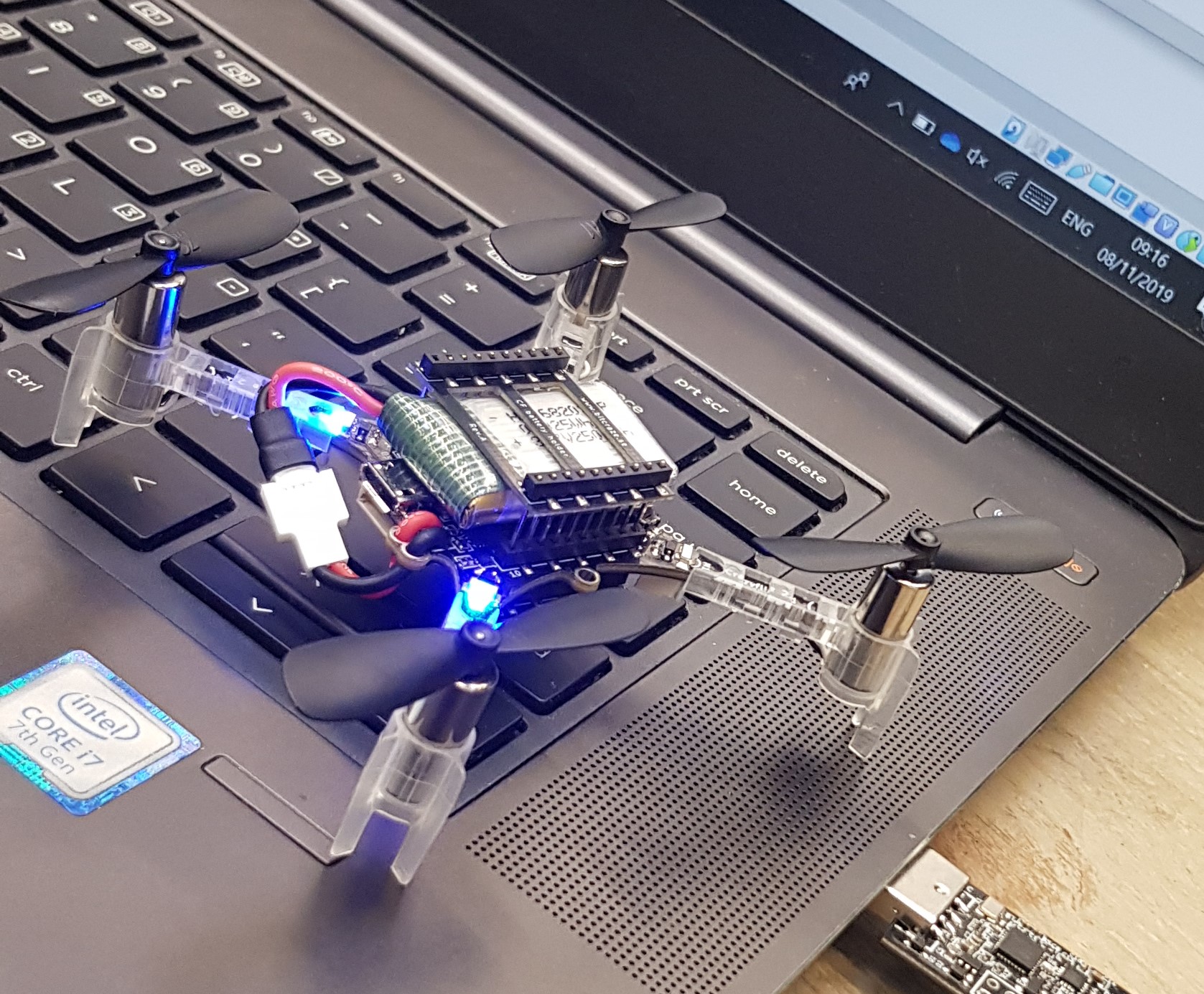AutoRef honors 2019: Difference between revisions
| Line 15: | Line 15: | ||
[[File:CF_on_laptop.jpg|right|300px|]] | [[File:CF_on_laptop.jpg|right|300px|]] | ||
This wiki is the documentation of work delivered by the AutoRef Honors students from academic year 2019/2020. | This wiki is the documentation of work delivered by the AutoRef Honors students from academic year 2019/2020. | ||
The goal of this project is to develop an autonomous robot capable of refereeing a robot football play. Such a system can of benifit because a robot could eliminate human error and use data from more sources to make better evaluated decisions. For this project we have decided to use a drone as a robot. Most drones are fast and they can change height easily, this agility enables a drone to quickly move to a position with a good view, this is a large advantage for a referee. Robot soccer is played on fields of different sizes, and a system using a drone is scalable, where as for instance a camera on a rail next to a field would not be so scalable. Other reasons for using a drone is that it is easy to carry around and a it is small object to work on. | The goal of this project is to develop an autonomous robot capable of refereeing a robot football play. Such a system can of benifit because a robot could eliminate human error and use data from more sources to make better evaluated decisions. For this project we have decided to use a drone as a robot. Most drones are fast and they can change height easily, this agility enables a drone to quickly move to a position with a good view, this is a large advantage for a referee. Robot soccer is played on fields of different sizes, and a system using a drone is scalable, where as for instance a camera on a rail next to a field would not be so scalable. Other reasons for using a drone is that it is easy to carry around and a it is small object to work on. | ||
Revision as of 18:21, 24 May 2020
AutoRef Honors 2019/20
Introduction

This wiki is the documentation of work delivered by the AutoRef Honors students from academic year 2019/2020.
The goal of this project is to develop an autonomous robot capable of refereeing a robot football play. Such a system can of benifit because a robot could eliminate human error and use data from more sources to make better evaluated decisions. For this project we have decided to use a drone as a robot. Most drones are fast and they can change height easily, this agility enables a drone to quickly move to a position with a good view, this is a large advantage for a referee. Robot soccer is played on fields of different sizes, and a system using a drone is scalable, where as for instance a camera on a rail next to a field would not be so scalable. Other reasons for using a drone is that it is easy to carry around and a it is small object to work on.
The
A large obstacle we faced during the project was that the university had to close due to the Covid-19 virus outbreak from March 2020. The effects on this project is that the team has not been able to test hardware on the university or work together physically. Considering these changes the team has decided to move our system to a simulation, and the work on the hardware has not been finalized.
- since we cannot test hardware anymore we had to adapt and switch to simulation
- Problem definition/challenge or leading question!!!
Team
This project was made by the following Honors student in the academic year 2019/2020:
- Alvaro Gonzalez
- Jake Rap
- Wolff Voss
References
Rosebrock, A. (2015). Ball Tracking with OpenCV - PyImageSearch. Retrieved 24 May 2020, from https://www.pyimagesearch.com/2015/09/14/ball-tracking-with-opencv/